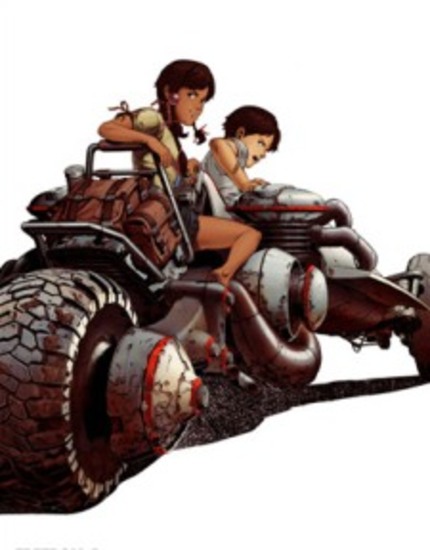Shuhei Morita's Freedom Review

Freedom is part of the Freedom Project, a big promotional endeavor started by Nissin Cup Noodles. Maybe the prospect of a series commissioned by a noodle company doesn't sound too appealing, but if names like Katsuhiro Otomo and Shuhei Morita are attached you can be sure it's at least worth trying out. And that it was. Find out more about this little 7-part OAV right after the break.
Otomo is one of the biggest names in the anime business, and will continue to be thanks to his involvement with Akira (writing the manga + directing the film), still the biggest ambassador of the anime scene based on popularity outside of its target audience. He's not the most active of directors, so whenever he partakes in a new project all eyes are on him. With Freedom, he left the directing responsibilities to Morita (who has only Kakurenbo to his credit), yet comparing Freedom and Kakurenbo that might've been a very smart choice indeed. Otomo himself spent his time working on the character and mecha designs, pretty obvious when checking out the artwork of the series.
Freedom is a 7-part OAV series which starts its story on Eden, a large moon settlement, several hundred years after the Earth was abandoned and left for dead. Technology evolved and so did the human race, so much they lost their will to restore Earth to its former glory. Takeru, our main guy, is the leader of a smalltime bike gang (sounds familiar?), participating in Wipeout-like races inside the Eden tunnels. One day Takeru breaks the Eden curfew and is sentenced to a couple of hours of communal services. When he ventures outside the realms of the dome he stumbles upon a picture from Earth, and so his journey to the big blue planet begins.
Freedom being an OAV, the level of animation is considerably higher than most TV projects. The animation itself feels a little strange though, something weird I couldn't really put my finger on the first couple of episodes. Until I found out the whole series was done in 3D. I was already impressed by the rather seamless integration of the 3D vehicles and such, but to find out even the characters were made in 3D was pretty startling really. Once you know it though, you start noticing these little details which give the 3D animation away. The animation of small shadows or those little extra movements characters are making rather than standing completely still. Morita (who used a very similar technique in Kakurenbo) did an amazing job with transforming the 3D models to look like 2D drawings.
No doubt this seamless integration is partly because Morita avoided exploring the 3D environments to their fullest potential. Especially during the early days of 3D animation, directors felt like they had to swing their camera in all different directions at once, circling and tumbling through the environments just because they could. Morita's direction is more subdued, only including one or two action scenes per episode and keeping the direction sober outside of those scenes. Furthermore, some details like the teeth and hair of characters have been meticulously tweaked to flow well with normal 2D designs. The 3D approach does benefit when the heat is on and the action level is raised. Several rockets are launched and there is some cool bike action that is quite impressive to look at.
The story is pretty nice, but with 3 mini-arcs it does feel a little cramped from time to time. The first three episodes are situated on the moon, the following three on Earth and the final one brings the two worlds together. In between episodes are rather large gaps that don't really need filling but are still noticed by their absence. This is only strengthened by the asynchronous structure of some of the episodes themselves. The feel of the series is pretty nice, though maybe not as gritty as you might expect. From time to time it feels a little like Planetes, though Otomo's designs give the series a little more edge. The drama can be a bit over-the-top, character exploration is a little limited and some moments do feel a little flaky, but overall there's plenty of interesting bits to keep the attention span going.
If anything, Freedom is a major and important leap in getting 3D animation to look like 2D. What they accomplished here is simply stunning, and even though the little details still betray the power behind the graphics, it really raised the quality of the animation. The series itself is pretty cool to follow, there's never a dull moment, though for me the real climax already surfaced in episode three. What follows isn't bad at all, but it isn't exactly the peak of anime either. And finally a little warning for people who get worked up about product placement. Beware that this is a series commissioned as a promotional tool, so from time to time you see people eat Nissin noodles. If you can't stand that (though I'd wonder why), irritation might pop up once or twice an episode.
All in all Freedom is a pretty fun and interesting watch. It's not too long, has some very impressive sequences and does a marvelous job of making 3D look like 2D, honoring Otomo's work as much as possible. And if it makes you a little hungry, know that the powers that commissioned the series have reached their goal. Just grab a cup of Nissin Noodles and all will be fine again.







